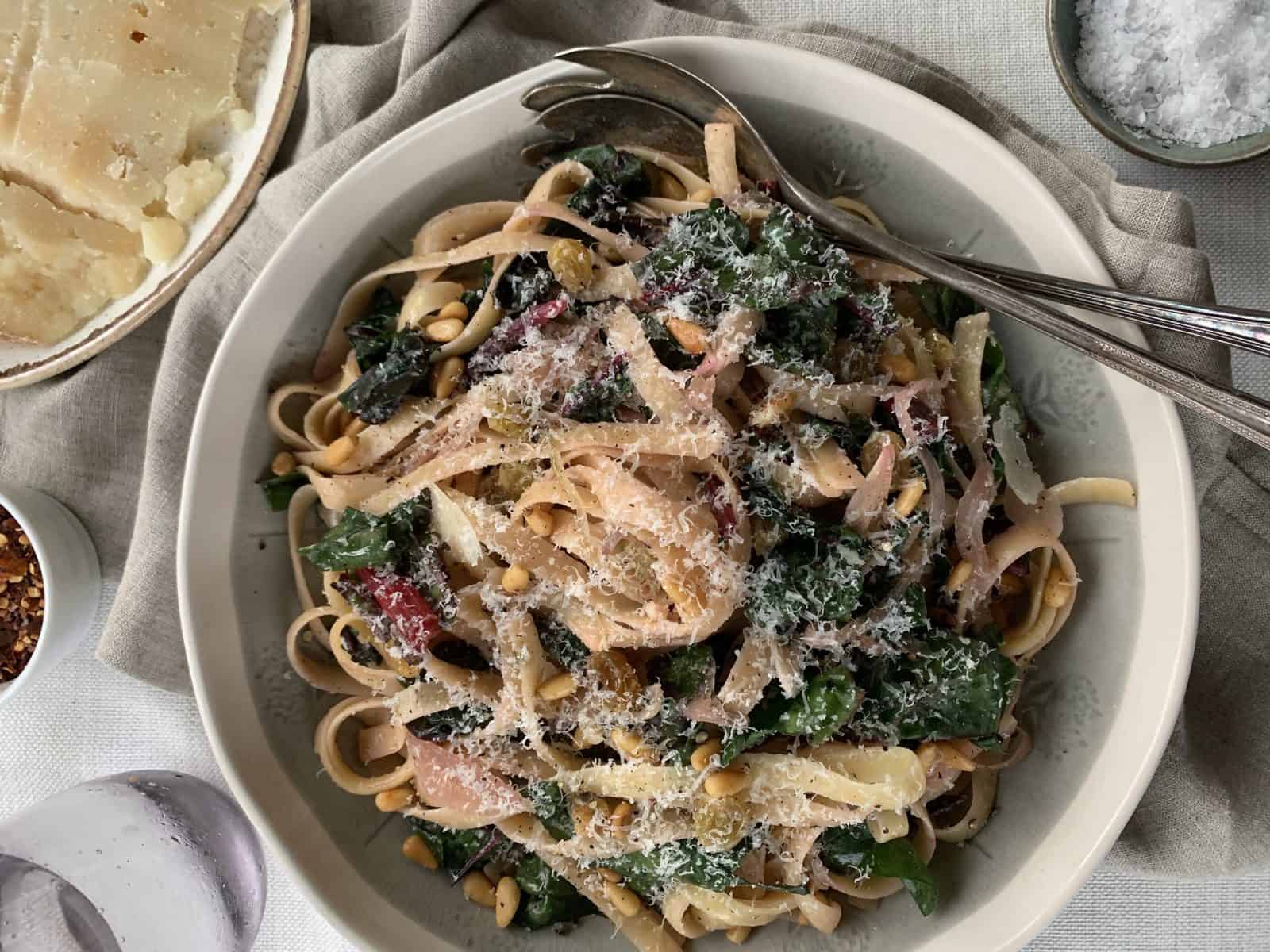

Fettuccine with Swiss Chard, Golden Raisins, Pine Nuts, and Fiore Sardo PDO
The brown-butter base of this pasta sauce plays of the nutty-sweet flavors of traditional sheep’s milk Fiore Sardo PDO, while vermouth and golden raisins add zingy contrast.
Ingredients
- ⅓ cup unsalted butter
- ¼ cup golden raisins
- 1 tablespoon extra-virgin olive oil
- 1 large shallot thinly sliced
- Kosher salt to taste
- 2 garlic cloves thinly sliced
- 1 bunch red green, or rainbow Swiss chard, destemmed and sliced into 2-inch ribbons
- 2 tablespoons dry vermouth or white wine
- ½ pound fettuccine
- ¼ cup pine nuts toasted
- ½ cup freshly grated Fiore Sardo plus extra for garnish
- Freshly cracked black pepper to taste
Instructions
- ► Put a large pot of water on to boil. Melt butter in a small saucepan with a light-colored bottom (to more easily keep track of its browning) over medium heat. Continue cooking at a low simmer, swirling pan. The color will progress from a light yellow to a golden brown; it is ready when the foam subsides, the bubbling quiets down, and it smells nutty. Remove from heat and set aside.
- ► Add enough hot water to cover raisins in a small bowl and set aside to plump.
- ► Once water has come to a boil, season generously with salt, and cook pasta until al dente.
- ►While pasta cooks, heat olive oil in a large skillet over medium heat. Add shallot and ½ teaspoon salt and cook until shallot softens and begins to become translucent, about 5 to 6 minutes. Stir in garlic, chard, vermouth, and another ½ teaspoon salt and lower heat to medium low. Cook for another 4 to 5 minutes or until chard is just tender, but still has a bite, and vermouth has evaporated. Reduce heat to low.
- ► When the pasta is done, drain, and add to shallots, along with pine nuts, raisins, brown butter, and Fiore Sardo. Toss to coat and season to taste with salt and pepper. Serve immediately and garnish with extra Fiore Sardo to taste.
Did You Know?
The name “Fiore Sardo” is said to derive either from the use of a coagulant obtained from a flower—most likely the thistle—or from the use of wooden stamps molded with an engraved flower on the disk that, until recent times, served to distinguish and decorate the cheese.
Sponsored by 3 Pecorini




